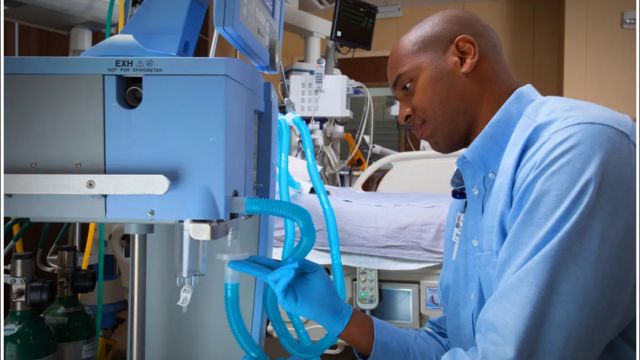In today’s healthcare landscape, medical devices play a key role in diagnosis, treatment, and patient monitoring. From basic tools like blood pressure monitors to sophisticated imaging systems like MRI machines, appropriate operation and management of these technologies are essential for providing safe and efficient healthcare. This is where clinical engineering—a specialist field bridging the gap between engineering and healthcare—comes into play to guarantee medical equipment is safe, dependable, and best used.
What is Clinical Engineering?
Clinical engineering is a branch of biomedical engineering focused on managing and maintaining medical equipment within healthcare settings. Clinical engineers collaborate closely with healthcare professionals, manufacturers, and regulatory bodies to oversee the entire lifecycle of medical devices, from procurement and installation to maintenance, repair, and eventual decommissioning.
Their expertise not only helps in ensuring patient safety but also enhances the efficiency of healthcare delivery by minimizing equipment downtime and optimizing resource utilization.
Importance of Medical Device Management
Effective medical device management is critical because:
-
Medical devices directly impact patient outcomes and safety.
-
Equipment failure or malfunction can lead to misdiagnosis, delayed treatment, or even harm.
-
Healthcare facilities invest heavily in expensive technology that requires proper upkeep to maximize return on investment.
-
Regulatory compliance mandates stringent controls over device safety, calibration, and documentation.
Clinical engineers are the key professionals responsible for addressing these challenges.
Core Responsibilities of Clinical Engineering in Medical Device Management

1. Equipment Evaluation and Procurement
Clinical engineers assess healthcare providers’ needs and evaluate medical devices before acquisition. This involves:
-
Reviewing technical specifications to ensure devices meet clinical requirements.
-
Assessing compatibility with existing hospital infrastructure.
-
Evaluating vendor support, warranty, and service agreements.
-
Considering cost-effectiveness and lifecycle costs, including maintenance.
Their involvement at this stage ensures that the devices procured are suitable, safe, and sustainable for long-term use.
2. Installation and Commissioning
Once medical equipment arrives, clinical engineers oversee its installation and testing to verify proper operation. This includes:
-
Verifying calibration and performance against manufacturer standards.
-
Ensuring proper integration with hospital information systems, where applicable.
-
Training clinical staff on correct operation and safety protocols.
Proper commissioning reduces early equipment failure and improves user confidence.
3. Maintenance and Repair
Clinical engineering teams establish preventive maintenance schedules to minimize unexpected breakdowns. Tasks include:
-
Regular inspections and functional tests to detect wear or malfunction.
-
Calibrating devices to maintain measurement accuracy.
-
Prompt troubleshooting and repair to reduce downtime.
-
Keeping detailed maintenance logs for compliance and quality assurance.
Preventive maintenance not only prolongs device lifespan but also safeguards patient safety.
4. Safety and Risk Management
Patient safety is paramount in healthcare, and medical devices must operate within safe parameters. Clinical engineers:
-
Conduct risk assessments to identify potential device hazards.
-
Implement corrective actions or recalls if devices pose safety concerns.
-
Ensure compliance with regulatory standards such as FDA (in the US), CE marking (in Europe), and other local regulations.
-
Collaborate with clinical teams to report adverse events related to device use.
These efforts minimize device-related risks and promote a culture of safety.
5. Training and User Support
Clinical engineers provide ongoing education and technical support to healthcare professionals. This includes:
-
Conducting workshops on device operation and maintenance best practices.
-
Creating user manuals and quick-reference guides.
-
Offering troubleshooting assistance during clinical use.
Empowering users reduces operator errors and improves clinical outcomes.
6. Inventory and Asset Management
Managing a large inventory of medical devices requires precise record-keeping and tracking. Clinical engineers use asset management systems to:
-
Maintain updated inventories including device specifications, warranty status, and maintenance history.
-
Track equipment location and usage patterns to optimize allocation.
-
Plan for timely upgrades or replacements.
Efficient asset management supports cost control and strategic planning.
7. Regulatory Compliance and Documentation
Healthcare facilities must comply with strict regulatory frameworks to ensure device safety and effectiveness. Clinical engineers:
-
Maintain thorough documentation of all device-related activities.
-
Prepare reports for audits and regulatory inspections.
-
Stay updated with changing standards and ensure timely implementation.
Compliance reduces legal risks and enhances institutional reputation.
Emerging Trends Impacting Clinical Engineering
The field of clinical engineering is evolving rapidly with advancements such as:
-
Internet of Medical Things (IoMT): Network-connected devices allow real-time monitoring and predictive maintenance.
-
Artificial Intelligence (AI): AI aids in diagnostics and automated troubleshooting.
-
Telemedicine: Remote device management and support are becoming increasingly important.
-
Regulatory Changes: Stricter standards require enhanced vigilance and documentation.
Clinical engineers must continually update their skills to leverage these technologies and maintain high standards.
Conclusion
Clinical engineering is a cornerstone of modern healthcare, ensuring that medical devices—essential tools in patient care—are handled expertly throughout their lives. By managing equipment evaluation, installation, maintenance, safety, training, and compliance, clinical engineers defend patient health, maximize healthcare delivery, and maintain the technological backbone of medical facilities.
For healthcare facilities striving to provide safe, efficient, and cutting-edge services, investing in robust clinical engineering capabilities is not only beneficial—it is vital.
Discover high-quality products, expert support, and reliable solutions tailored for your business.
Contact JandJ Supplies today and let us help you streamline your operations with the best packaging, medical, and engineering supplies!








